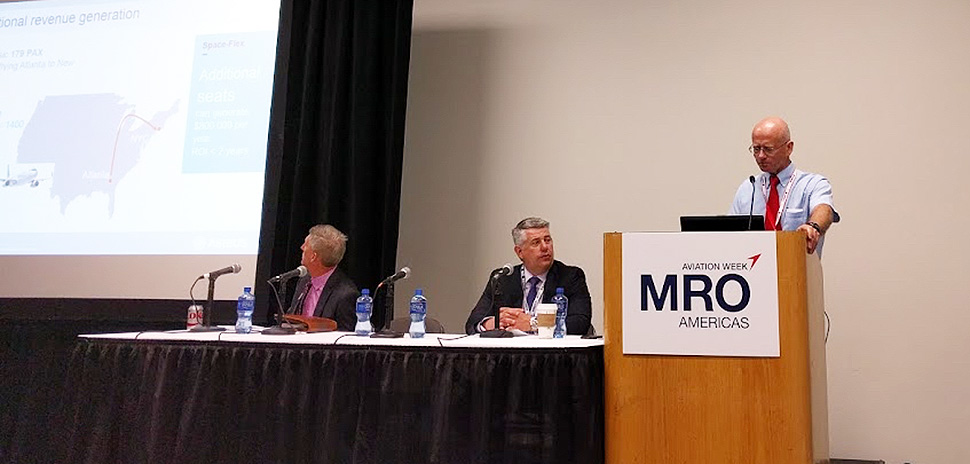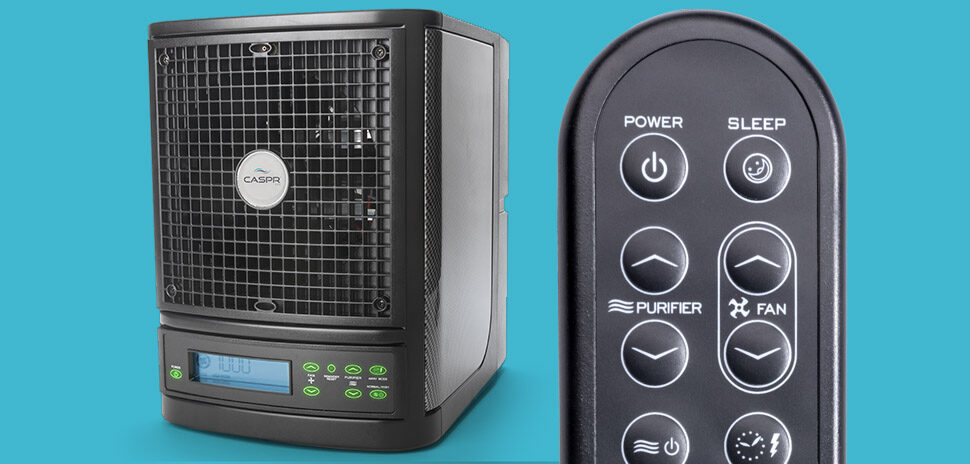The MRO Americas held its 21st annual conference and exhibition at the Kay Bailey Hutchison Convention Center in Dallas this week.
MRO Americas Aviation Week is a the three-day event that brings the aerospace industry’s top thought leaders and experts together to discuss the latest trends, technologies, and innovation.
BOEING 787 DREAMLINER
The state-of-the-art Boeing 787 Dreamliner transmits about 28 megabytes of transmittable data on an average airline flight. A portion of that is the demand from the more than 200 passengers surfing the web, downloading movies, or checking email.
Within 10 years, that will skyrocket to 137 terabytes, according to Bob Haag, a business development leader for Rockwell Collins, who makes high-tech equipment for the airline industry.
Preparing for that tidal wave keeps Haag and others in that fast-growing sector very busy. Especially considering that mobile technology becomes obsolete every six months. But commercial airlines can’t just wait in line at the Apple Store and swap out the flatscreen monitors on every seat in their fleet.
AIRLINES DON’T KNOW WHICH WAY TECHNOLOGY WILL HEAD
Haag recently received a request for proposal for a next generation aircraft with 17 different options because they don’t know which way the technology will go.
“Airlines need to differentiate themselves,” said Haag, who was part of a panel on the future of air cabins at the MRO Americas conference on Wednesday. “As an equipment OEM, I have to be able to potentially customize a product but keep my product costs low so I can be competitive, too.”
But there’s good news for consumers, too.
“All that competition for bandwidth, the price per gigabyte is going to continue to be driven down,” Haag said.
“All that competition for bandwidth, the price per gigabyte is going to continue to be driven down.” –Bob Haag
Asked whether he thinks the future lies in seatback monitors or in travelers bringing their own devices, Haag said it depends on the brand and the class.
“One of the common themes I see is the premium classes still get premium glass (seatback monitors),” Haag said. “Bring your own device in the back.”
Low-cost carriers such as Dallas-based Southwest Airlines (NYSE: LUV) don’t offer first class and all passengers bring their own devices.
John Grant, head of marketing for upgrade services at Airbus, said LED lighting has also revolutionized the passenger experience.
“You’re in a confined space,” he said. “Light affects the ambiance of the plane. You can do many things with light. Clearly, it’s progressing forward.”
A PIONEER IN AIRLINE ‘MOOD LIGHTING’
Virgin America, which recently was bought by Alaska Airlines for $2.6 billion, was one of the pioneers in mood lighting.
Some of the upgrades to the cabin are less obvious but just as critical to the airlines’ bottom line.
Redesigning the rear galley and laboratory on an Airbus A320 saves precious inches, allowing the airline to squeeze one more row, or six more seats, into the aircraft.
Called Space Flex, it uses a curved design to optimize space. With the A321 aircraft, that adds 10 more seats.
“The space race continues today. It’s in the aircraft cabin. It’s the race for space.” -John Grant
An airline could get a return on investment for this upgrade within three years for an Atlanta to New York City route, Grant said. With today’s technology, airlines can use a 1-inch seat cushion that’s just as comfortable as an older 3-inch cushion.
“The space race continues today,” Grant joked. “It’s in the aircraft cabin. It’s the race for space.”
But, he stressed, this is not about cramming people in like sardines. It’s about better utilizing available space.
“Comfort levels are also a really important driver in the design of a carrier,” he said.
For a daily dose of what’s new and next in Dallas-Fort Worth innovation, subscribe to our Dallas Innovates e-newsletter.


































































